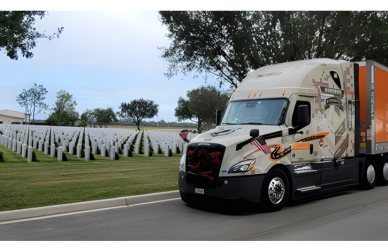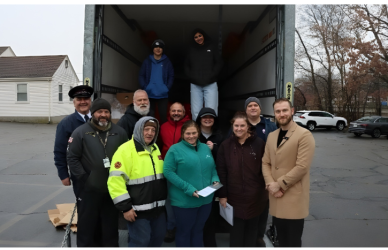The American Transportation Research Institute (ATRI) has unveiled its latest research on the pressing need for increased truck parking at public rest areas. The study sheds light on the current challenges and offers strategies to address this critical industry hurdle.
A Collaborative Effort
This research was conducted in partnership with the American Association of State Highway and Transportation Officials (AASHTO), which represents all 50 state Departments of Transportation, as well as those in Washington, D.C., and Puerto Rico.
Shayne Gill, Program Director for Multimodal Transportation at AASHTO, stated, “State DOTs strive to deliver the most safe, effective, and efficient transportation network possible; as a result, they continue to pursue a wide range of investments that enhance the nation’s multimodal freight system. Addressing truck parking needs across the country is one of those investments crucial to ensuring we maximize the benefits our highway system provides. American quality of life and economic mobility depend in large part on the quality and vibrancy of our transportation infrastructure to connect people as well as goods to their destinations safely. And adequate truck parking is key to ensuring we achieve those goals.”
The Ongoing Truck Parking Shortage
The shortage of truck parking continues to be a major concern for the industry, gaining attention from both federal and state authorities. Current estimates suggest only one truck parking space is available for every 11 truck drivers nationwide.
To better understand the situation, ATRI and AASHTO conducted a survey addressing the costs and requirements associated with creating public truck parking spaces. The research analyzed factors such as land acquisition, construction costs, maintenance budgets, and amenities offered to truck drivers. On average, public rest areas provide just 19 truck parking spaces, with Southern states offering 25 spaces per rest area and Northeastern states averaging only 15 spaces.
Insights from Case Studies
The research also includes case studies examining specific states’ innovative efforts to improve truck parking options. Key topics covered within these studies include:
- Implementation of truck parking information systems.
- Repurposing state-owned properties to create new parking spaces.
- Provisions for truck parking during severe weather conditions.
These case studies were informed by feedback from over 500 truck drivers, offering valuable insights into the effectiveness of specific measures and policies.
State-by-State Truck Parking Dashboard
Drawing on data from the survey, ATRI developed a public truck parking dashboard that evaluates each state’s current parking capacity. The dashboard also highlights the availability of amenities and safety measures at rest areas, with metrics tailored according to state size, road mileage, and proximity to major freight routes. Truck parking data from 47 participating DOTs is accessible online through ATRI’s website.
Alix Miller, CEO and president of the Florida Trucking Association, emphasized the importance of this research, saying, “ATRI’s research underscores the importance of public sector truck parking and provides multiple tools for states to evaluate their progress in meeting this critical industry need. We applaud FDOT for their commitment to expanding truck parking capacity, and our association is committed to continued collaboration to improve freight safety and mobility in the state of Florida.”
Access the Full Report
If you’re interested in deeper insights or want to explore the state-by-state truck parking assessments, the full report and dashboard are available here.
Source: The Trucker











